Blog
The 31st December 2020 marks the 300th anniversary of the birth of Prince Charles Edward Stuart. To commemorate this special occasion the West Highland Museum has organised a series of articles written by scholars, academics, authors, and Jacobite enthusiasts. In this ninth in the series, military expert and proprietor of MacDonald Armouries, Paul MacDonald, focuses on a special Jacobite weapon.
A Royal Jacobite Sporting Gun
In my profession of crafting custom historic arms, some of the most rewarding and insightful work comes in the form of handling and studying original examples. The opportunities to refurbish and examine originals present themselves quite regularly, though handling pieces of notably significant provenance are always rarer honours to cherish.
I was honoured indeed in 2016 to be asked to refurbish the private collection of Donald Cameron of Lochiel, the 27th chief of Clan Cameron. This is undoubtedly one of Scotland’s most important family collections of arms. Spanning some 350 years, many of these edged weapons and firearms were once owned, carried and used by the legendary ancestral chiefs of Clan Cameron. These arms are the tangible links to those remarkable men and their histories.
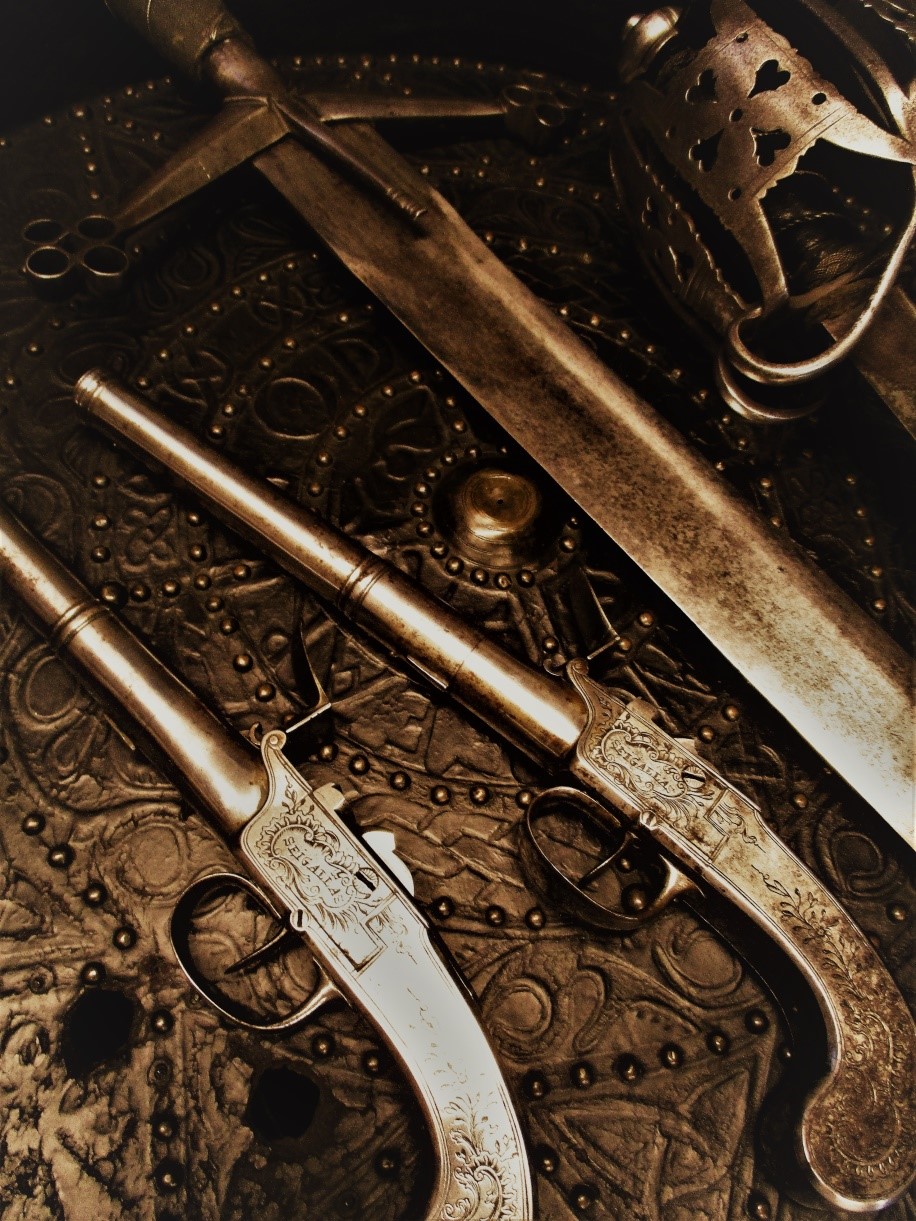
One of the most impressive and significant pieces in the whole collection is a flintlock musket of outstanding provenance. Crafted in France c.1735 - 45, this was Prince Charles Edward Stuart’s personal fowling piece.
This sporting gun is of the highest quality overall and is made with a wender or turn-about flintlock mechanism. It has an over-under configuration of two barrels, with a flintlock loading/firing mechanism on either side of the main body. The lock on the left side (as viewed with gun shouldered) is curiously upside-down. After priming and loading both barrels and flintlocks, the top barrel can then be fired (activated by the right-hand flintlock mechanism). The operator then puts their fingers underneath the trigger-guard and pulls it up into the body. The trigger guard when pulled activates an internal spring lever, which allows both barrels to be rotated a full 180 degrees that the lower barrel becomes the upper and may then be fired.
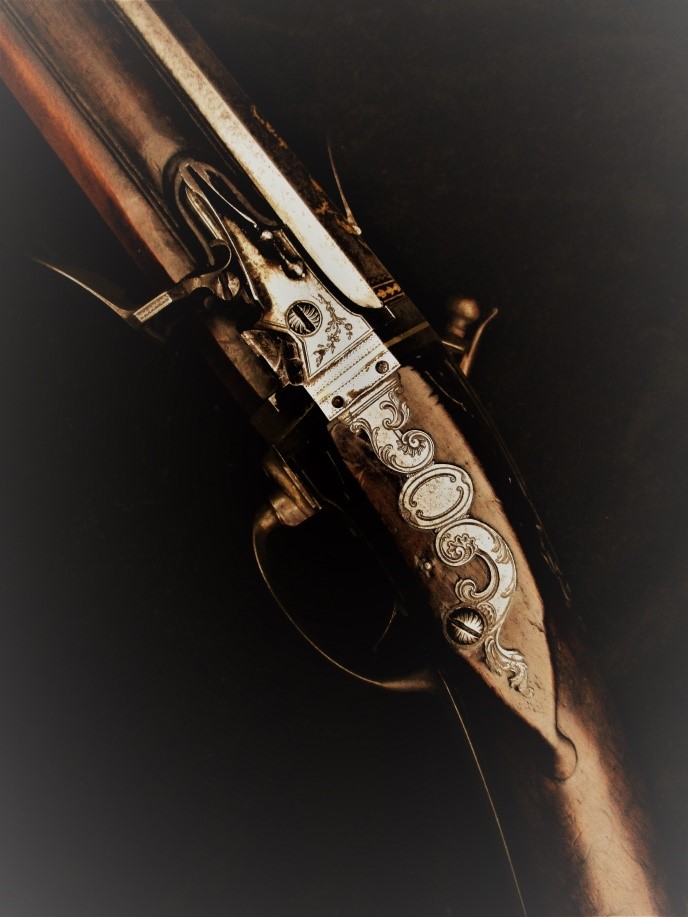
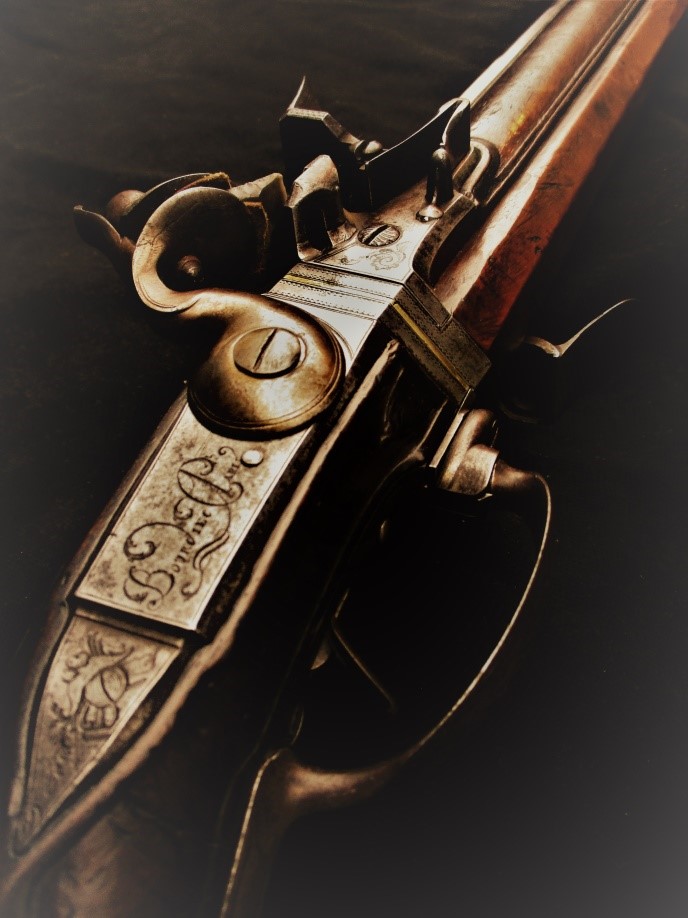
The walnut stock is beautifully carved with scroll designs to complement the engraved steel fittings. Not one component of the gun in fact is without quality decoration. The lock bears the name of Bourdiec, Paris (operating there from 1735 – 1750) and refurbishment more clearly revealed part of an inscription running down the top of the barrel –
TU:NE:CEDE:MALIS:SED:CONTRA:AUDENTIOR:ITO:(QUA:TUA:TE:FORTUNA:SINET)
(As for you, don't give way to evil: on the contrary venture forth more boldly on the route which your destiny permits). This quotation is from Virgil's Aeneid as Sybil urges Aeneas to acts of greater daring and is known on other Jacobite relics.
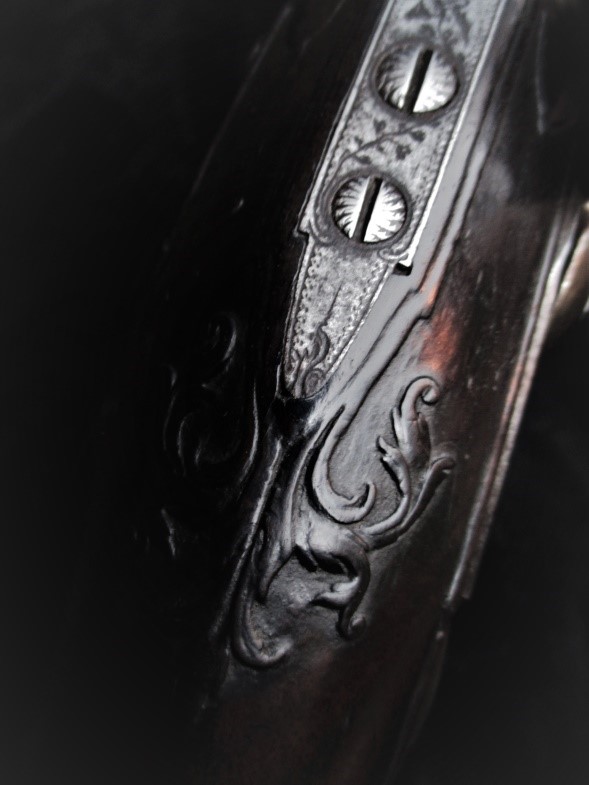
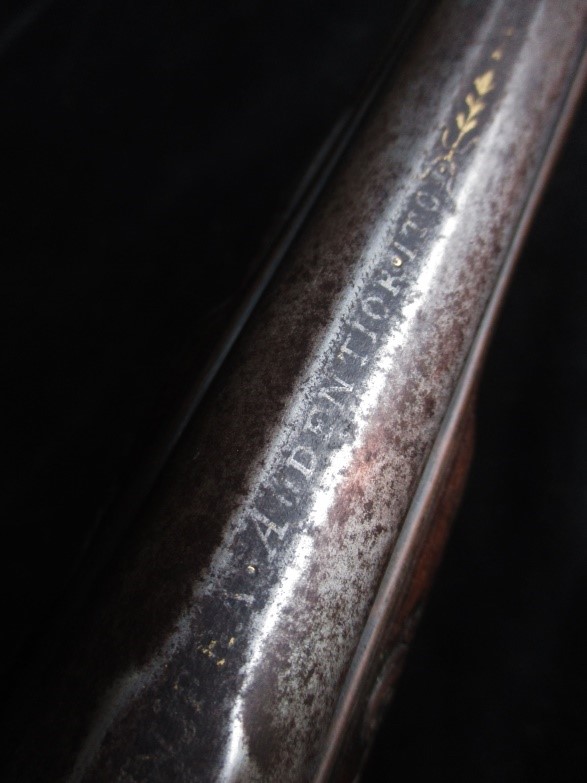
One flint-cock was replaced in 1995 by the National Trust in preparation for the gun being displayed as part of The Sword and The Sorrows exhibition at Culloden in 1996.
One barrel has also at some point in its life been replaced with one of wooden form. This has likely been the result of damage or breakage (a possible fracture from over-charging) that would have rendered that barrel dangerous to use. The replacement wooden barrel still shows signs of age and professional quality craftsmanship (suggesting this may have been carried out during its working life or in the C19th at latest.
The back of the barrel is decorated with a prominent engraved and gilded Crown and Thistle device. It has been suggested this may originally have been crafted for the Prince’s Father, King James VIII, though a counter-point to this may be presented in the fact that targes were crafted for use during the ’45 which also incorporated a thistle and crown device, symbolising the Scottish King that was to be.
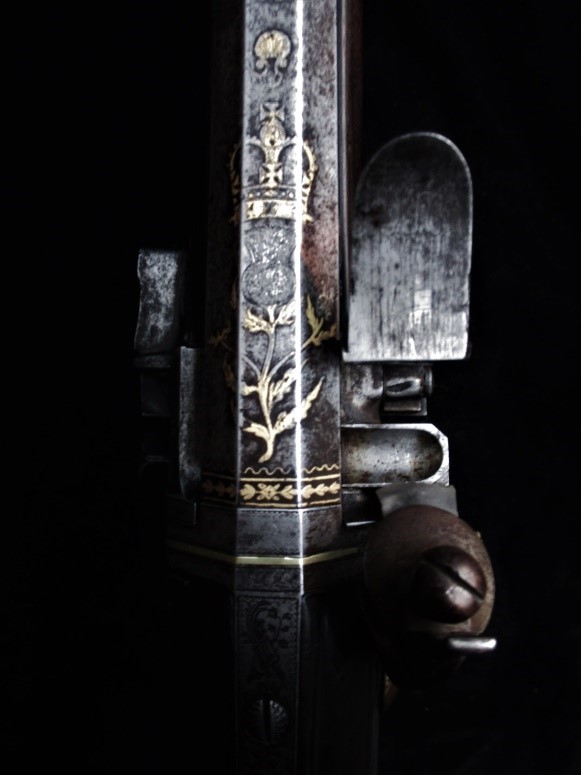
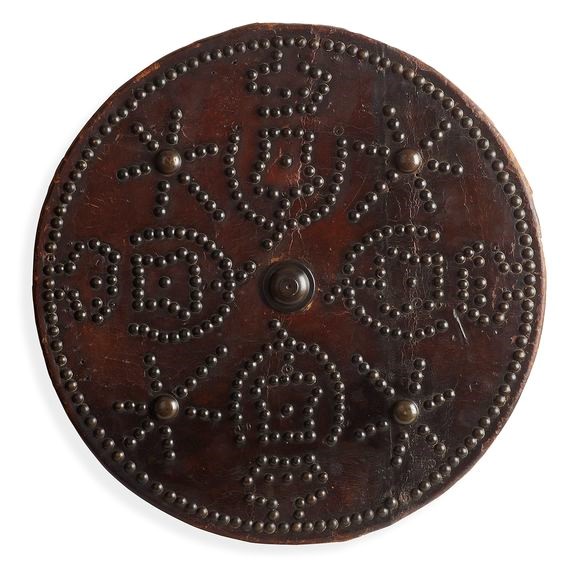
This gun was originally gifted to 7th Earl David Wemyss, Lord Elcho by Prince Charles Edward Stuart. Francis Lord Elcho, son of the 7th Earl of Wemyss made a gift of the gun to Cameron of Lochiel in 1808 (Donald Cameron, 22nd Chief). It has been held in the Lochiel line since that time.
This gun also played a part in the history of the '45 Rising, with sporting shooting being a favoured pastime and skill the Prince enjoyed practicing. The following references make mention of this gun and the Prince’s skill at arms.
From "The White Cockade" by The Baron Porcelli, 1949, p.155 -
"June 1746 -
Thursday 15th (May) to Thursday, June 5th - The Prince remained in the forester's house at Corodale for twenty-two days, amusing himself by fishing and shooting.
At this time the island of South Uist was considered the best for game in all Scotland, teeming, as it was, with grouse, partridges and all kinds of wild fowl and also plenty of deer. The Prince, who had always been a first-class shot, would bring down dozens of grouse in a day."
p.211 -
"September 1746 -
Breakachie also brought three guns ("fusees") belonging to the Prince, one mounted with gold, the second with silver and the third half mounted. The Prince, who was delighted to see these guns, said, "It is a remarkable thing that my enemies have not discovered one farthing of my money, a rag of my cloathes, or one piece of my arms."
That night, the whole party started off again.
Sunday 14th - Reaching Corvoy, which means the corry of the Moy Burn, by daylight, they rested there during the day. After feeling refreshed, and deeming himself to be in a perfectly safe spot, the Prince made all the party throw up their bonnets in the air and fire at them with the Prince's guns, to see who was the best shot. The Prince proved to be an easy winner."
The Lochiel gun would appear to be the fore-mentioned one mounted with gold. This Royal firearm displays the highest levels of mid-C18th gunmaker’s craft and seamless engineering in equal amounts. Along with the additional provenance of it having been fired by the Prince himself during the ’45 and being a part of the unique Lochiel collection, this stands today as a historic relic of singular importance.
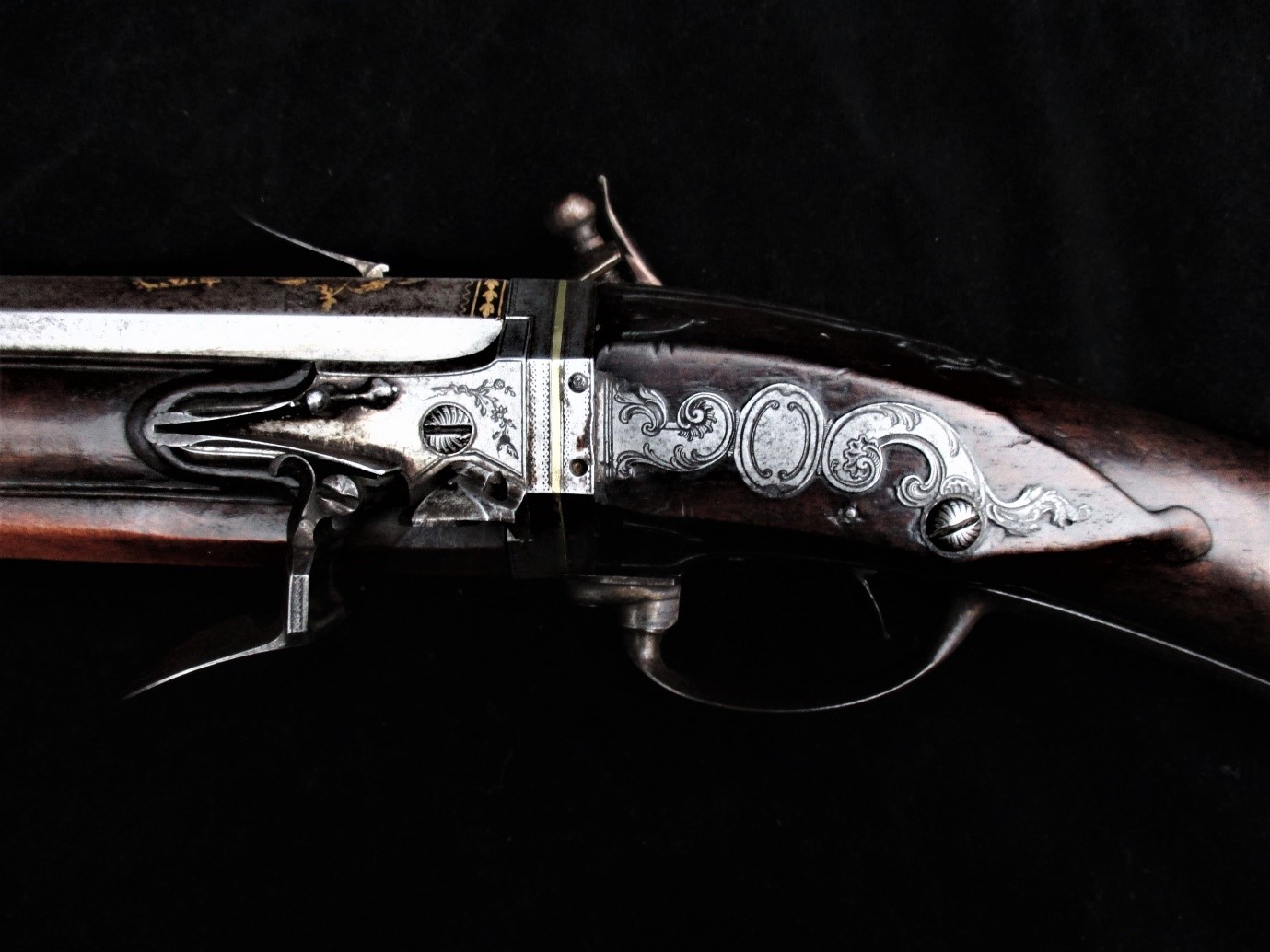
Paul Macdonald
Macdonald Armouries











